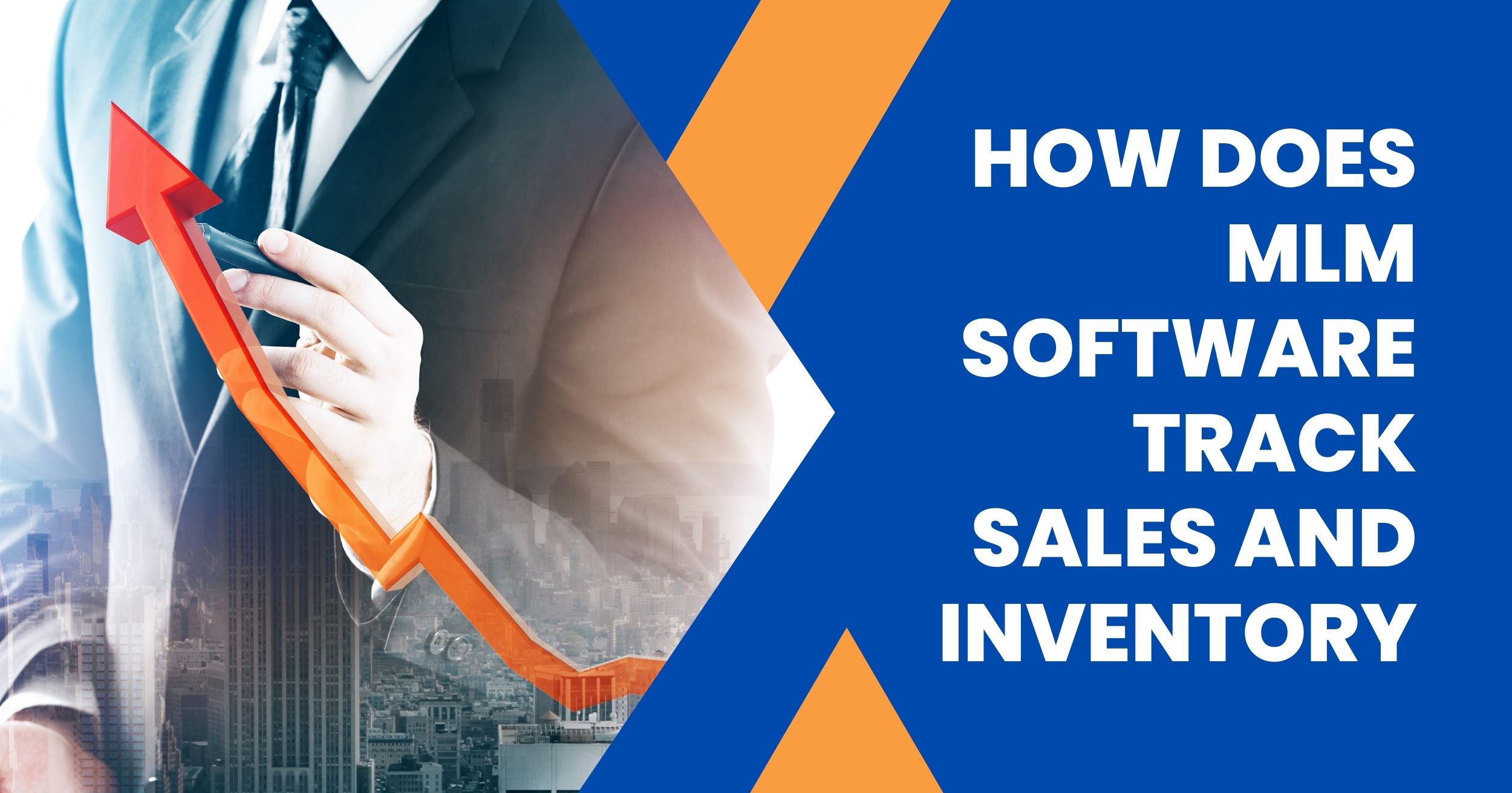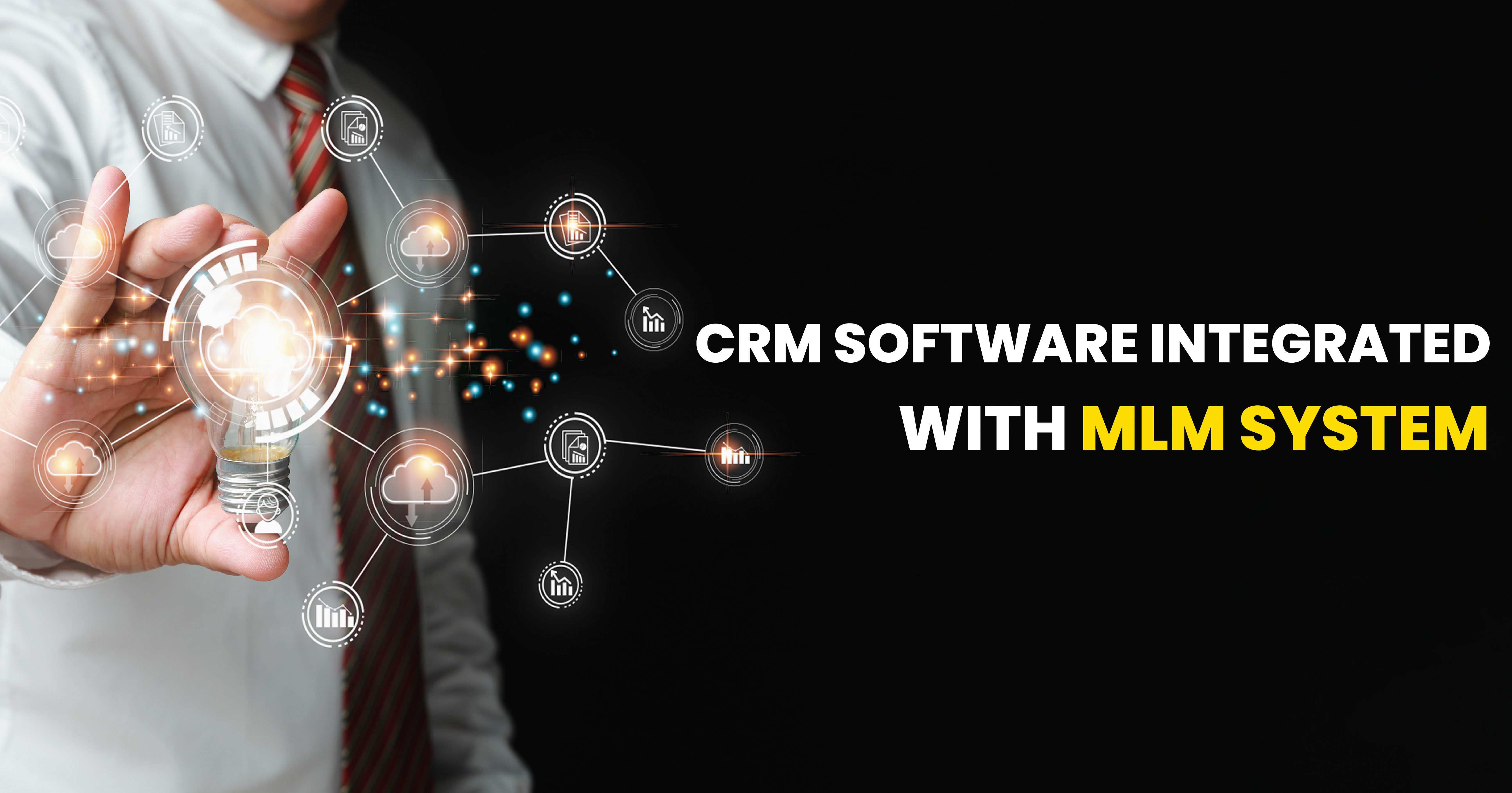Integrating MLM software with other platforms?

Posted On: 15th Apr 2024 03:59
Are you looking to streamline your MLM business by integrating MLM software with other platforms? If so, you're on the right track to enhance your efficiency and productivity. Integrating MLM software with other platforms can bring numerous benefits to your business, including seamless data synchronization, improved reporting, and enhanced user experience.
Understanding MLM software integration -
MLM software integration refers to the process of connecting your MLM software with other platforms or systems to enable effective communication and collaboration. By integrating MLM software with various platforms such as e-commerce, CRM, or email marketing, you can ensure smooth data transfer and eliminate the need for manual data entry. This integration allows for real-time data synchronization, ensuring that your team and systems are always up-to-date.
Integrating MLM software with other platforms offers a holistic view of your business operations, enabling you to make informed decisions and take proactive measures. It eliminates data silos and enables seamless information flow between different systems, enhancing overall efficiency and productivity.
Benefits of integrating MLM software with other platforms -
Integrating MLM software with other platforms brings a wide range of benefits to your business. Let's explore some of the key advantages:
1. Seamless data synchronization -
One of the primary benefits of integrating MLM software with other platforms is seamless data synchronization. When your MLM software is connected with other systems, data flows seamlessly between different platforms, eliminating the need for manual data entry or duplicate efforts. This ensures that your team has access to real-time and accurate information, enabling them to make informed decisions and take timely actions.
2. Improved reporting and analytics -
Integrating MLM software with other platforms allows for consolidated reporting and analytics. With all your data centralized in one place, you can generate comprehensive reports and gain valuable insights into your business performance. This enables you to identify trends, track key metrics, and make data-driven decisions. Improved reporting also simplifies compliance requirements and enables you to monitor the effectiveness of your MLM strategies.
3. Enhanced user experience -
Integrating MLM software with other platforms enhances the user experience for both your team and your customers. For your team members, it eliminates the need to switch between multiple systems, reducing the learning curve and increasing productivity. For your customers, it offers a seamless experience across different touchpoints, ensuring a consistent brand experience and improving customer satisfaction.
Common platforms for MLM software integration -
There are several platforms that you can integrate with your MLM software to enhance its functionality and streamline your business processes. Let's explore some of the most common platforms for MLM software integration:
1. E-commerce platforms -
Integrating MLM software with e-commerce platforms such as Shopify, WooCommerce, or Magento can automate key sales and order fulfillment processes. It enables real-time inventory management, automatic order processing, and seamless commission calculations for your MLM distributors. This integration saves you time and effort by automating repetitive tasks and ensures a smooth customer experience from the point of purchase to product delivery.
2. CRM systems -
Integrating MLM software with CRM systems like Salesforce, HubSpot, or Zoho CRM allows you to effectively manage customer relationships and track your sales pipeline effortlessly. It enables you to capture and store customer data, track interactions, and manage leads and opportunities. With MLM software integration, you can automate lead distribution, track conversions, and measure the effectiveness of your MLM campaigns, ultimately improving your sales and revenue.
3. Email marketing platforms -
Integrating MLM software with email marketing platforms such as Mailchimp, ActiveCampaign, or Sendinblue enables you to automate your email communication and leverage the power of personalized marketing. It allows you to segment your MLM distributors and customers based on their behaviors and preferences, send targeted emails, and track the performance of your email campaigns. This integration helps you nurture relationships with your MLM network and drive engagement and conversions.
A step-by-step guide to integrating MLM software with other platforms -
Integrating MLM software with other platforms may seem complex, but with a strategic approach, it can be simplified. Here is a step-by-step guide to help you integrate your MLM software seamlessly:
1. Identify your integration requirements -
Start by identifying the specific platforms or systems that you want to integrate with your MLM software. Determine your integration goals and the functionalities you wish to achieve through integration. This will help you prioritize your integration efforts and select the right tools and solutions.
2. Choose the right integration solution -
Next, research and evaluate integration solutions that are compatible with your MLM software and the platforms you want to integrate. Look for solutions that offer pre-built connectors or APIs to simplify the integration process. Consider factors such as scalability, ease of use, and cost-effectiveness when choosing an integration solution.
3. Plan your integration strategy -
Develop a comprehensive integration strategy that outlines the scope, timeline, and resources required for the integration project. Define the data mapping and synchronization rules, as well as the workflows and triggers that need to be set up. Consider involving a dedicated integration specialist or consultant to ensure a smooth and successful integration.
4. Test and validate the integration -
Before deploying the integrated solution, thoroughly test and validate the integration. Conduct end-to-end testing to ensure that data is accurately synchronized between your MLM software and the integrated platforms. Test different scenarios and workflows to identify and resolve any potential issues or errors.
5. Train your team -
Once the integration is deployed, provide training to your team members on how to effectively use the integrated solution. Ensure that they understand the new workflows, processes, and functionalities enabled through integration. Offer ongoing support and documentation to address any queries or challenges that may arise.
6. Monitor and optimize the integration -
Regularly monitor the performance of your integrated solution and track key metrics to measure its effectiveness. Identify areas for improvement and optimization, and make necessary adjustments to enhance the integration's performance. Stay updated with the latest updates and releases from your integration solution provider to leverage new features and functionalities.
Best practices for successful integration -
To ensure a successful integration, consider the following best practices:
1. Clearly define your integration goals -
Before starting the integration process, clearly define your integration goals and communicate them to your team. This will help everyone understand the purpose and benefits of integration and align their efforts accordingly.
2. Involve key stakeholders from the beginning -
Involve key stakeholders, including your MLM distributors, IT team, and business leaders, from the early stages of the integration project. Their input and feedback will help you design an integrated solution that meets their specific needs and requirements.
3. Prioritize data security and privacy -
When integrating MLM software with other platforms, ensure that data security and privacy are given top priority. Implement robust security measures and encryption protocols to protect sensitive information. Comply with relevant data protection regulations to maintain the trust of your MLM network and customers.
4. Regularly update and maintain your integration -
Technology and business requirements evolve, so it's crucial to update and maintain your integration regularly. Stay informed about the latest updates and releases from your integration solution provider and implement them as necessary. Monitor the performance of your integrated solution and address any issues or bottlenecks promptly.
Case studies of successful MLM software integration -
To illustrate the benefits and possibilities of MLM software integration, let's take a look at a few case studies:
Case Study 1:
FinoForce, a leading MLM company, integrated its MLM software with an e-commerce platform to automate its order fulfillment process. This integration enabled real-time inventory management, automatic order processing, and seamless commission calculations. As a result, FinoForce experienced a significant reduction in manual effort, improved order accuracy, and enhanced distributor satisfaction.
Case Study 2: FinoForce
FinoForce integrated its MLM software with a CRM system to streamline its lead management and sales processes. This integration allowed them to capture and store customer data, track interactions, and automate lead distribution. FinoForce saw a substantial increase in lead conversion rates, improved sales visibility, and enhanced distributor productivity.
Case Study 3:
FinoForce integrated their MLM software with an email marketing platform to automate their email communication and nurture their MLM network. This integration enabled them to send personalized emails based on distributor behaviors and preferences, resulting in higher open rates and click-through rates. Company DEF witnessed improved engagement, increased conversions, and strengthened distributor relationships.
Challenges and solutions in MLM software integration -
While integrating MLM software with other platforms offers numerous benefits, it can also present challenges. Here are some common challenges and their solutions:
1. Data inconsistencies -
Data inconsistencies can arise when integrating MLM software with other platforms due to differences in data structures and formats. To overcome this challenge, define data mapping rules and establish data validation processes to ensure consistency and accuracy. Regularly monitor data quality and address any discrepancies promptly.
2. Incompatible systems -
Incompatible systems can hinder the integration process and lead to technical difficulties. To address this challenge, choose integration solutions that offer pre-built connectors or APIs for seamless integration. Conduct thorough compatibility tests before deploying the integration to identify and resolve any compatibility issues.
3. Resistance to change -
Resistance to change from your team members or MLM distributors can hinder the successful adoption of the integrated solution. To overcome this challenge, communicate the benefits of integration and involve your team in the decision-making process. Provide training and ongoing support to ensure a smooth transition and address any concerns or challenges that may arise.
Choosing the right MLM software for integration -
Choosing the right MLM software for integration is crucial to ensure a seamless and successful integration. Consider the following factors when selecting MLM software:
1. Compatibility with integration solutions -
Choose MLM software that is compatible with popular integration solutions and platforms. Look for software providers that offer pre-built connectors or APIs to simplify the integration process.
2. Scalability and flexibility -
Select MLM software that can scale with your business and accommodate future growth. Ensure that the software allows for customization and integration with other systems as your business evolves.
3. Reporting and analytics capabilities -
Evaluate the reporting and analytics capabilities of the MLM software. Look for features that enable comprehensive reporting, real-time data visualization, and actionable insights to support your decision-making process.
4. User experience and ease of use -
Consider the user experience and ease of use of the MLM software. Choose software that offers an intuitive interface, robust training resources, and responsive customer support to ensure a smooth user experience.
Expert tips for maximizing the benefits of integrated MLM software -
To maximize the benefits of integrated MLM software, consider the following expert tips:
1. Continuously monitor and optimize -
Regularly monitor the performance of your integrated solution and identify areas for improvement. Optimize your integration workflows, processes, and data management strategies to enhance efficiency and effectiveness.
2. Foster collaboration and communication -
Encourage collaboration and communication between different teams and systems. Ensure that data flows seamlessly between your MLM software and other platforms to enable effective teamwork and streamlined processes.
3. Leverage automation and artificial intelligence -
Explore the possibilities of automation and artificial intelligence within your integrated solution. Automate repetitive tasks, leverage predictive analytics, and use AI-powered algorithms to optimize your MLM strategies and drive better results.
4. Stay updated with industry trends -
Stay updated with the latest trends and developments in MLM software integration and the platforms you are integrating with. Attend industry events, join forums and communities, and engage with experts to stay informed and leverage new opportunities.
Conclusion -
In today's fast-paced business environment, integrating MLM software with other platforms is essential to stay ahead of the competition and maximize your business potential. By connecting your MLM software with e-commerce, CRM, or email marketing platforms, you can streamline your business processes, improve reporting and analytics, and enhance the user experience. However, successful integration requires careful planning, the right integration solution, and ongoing monitoring and optimization. Choose the right MLM software for integration, involve key stakeholders, and prioritize data security to ensure a seamless and successful integration. Embrace the power of interconnected platforms and take your MLM business to new heights.




